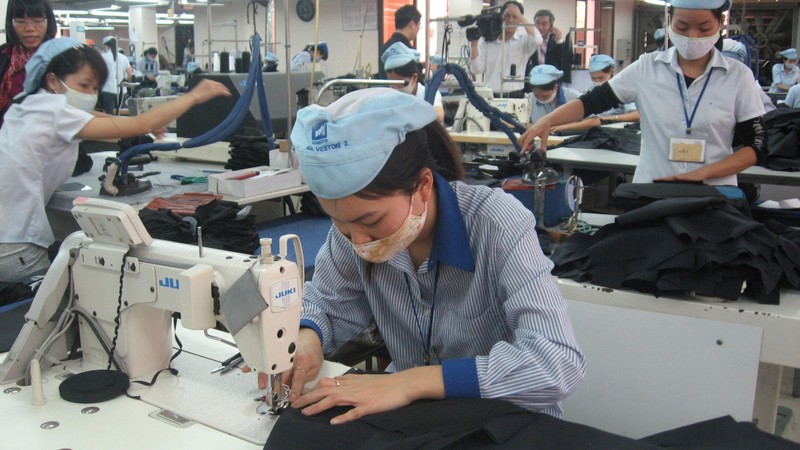Multi-dimensional impacts
Appreciating the significance of the CPTPP for the textile and garment industry, Cao Huu Hieu, Managing Director of the Vietnam National Textile and Garment Group (Vinatex), said that the CPTPP was approved by the National Assembly and the implementation of the CPTPP is a good opportunity for businesses. However, due to the absence of US involvement, the market size is not as large. With the agreement, Vietnam's textile and garment industry is growing but not changing at a high level.
In fact, the market size of the participating countries is not large. Certain new markets such as Canada are small in size, but Vietnamese textiles are gaining strength in these markets. Therefore, the expectation from the CPTPP for the textile and garment sector is helping businesses explore new markets, and diversify the markets and export products of Vietnam.
Although China's plan on joining the CPTPP is unofficial, Managing Director of the Vinatex, Cao Huu Hieu, also said that, if China participates in the CPTPP, Vietnam and the rest of the CPTPP also faces fierce competition because China was the top ranked global textile exporter in both quantity and value. The products of the country are also very diverse, from garments to yarn and textile products. Therefore, if China joins the CPTPP, it will be difficult for domestic garment enterprises.
With the EVFTA, Managing Director of the Vinatex Cao Huu Hieu said that the European Union (EU) is the second largest market of Vietnamese textiles and garments after the US and always has a relatively high growth rate (from 7-10% every year). Therefore, when joining the EVFTA, Vietnam's textile and garment sector will enjoy a lot of tax incentives.
The EVFTA is expected to provide the same effect as the Vietnam-Korea Free Trade Agreement (VKFTA). Specifically, in 2018, Vietnam's textile and garment industry has enjoyed spectacular growth in the Korean market with more than a 20% increase. Currently, in the market, Vietnam is prepared to catch up with China with the rate of Vietnamese products at 34.46% and Chinese products at 36.45%. However, with the current growth rate, it is likely that Vietnam can overtake China in the Korean market this year.
"Hopefully, after the EVFTA comes into effect, Vietnamese businesses will make good use of the opportunities offered by the agreement so that we can dominate the EU market in return for other markets, especially in the case of China National participation in the CPTPP ", Managing Director of the Vinatex Cao Huu Hieu said.
Humans – An important factor
In order to take advantage of the upcoming FTAs, many enterprises under Vinatex have invested in modern machinery and technology to increase labour productivity and improve the competitiveness of export products. Meanwhile, they have also invested in human resources through the plan on upgrading Hanoi College for Textile, Garment and Fashion into the University for Textile, Garment and Fashion, which was submitted to the Government and has been approved. The university is expected to become a training channel for human resources of the textile and garment industry. In the development orientation of the school, Vinatex also requires the training of students to approach the thinking of the Fourth Industrial Revolution, with the school subjects on enterprise management, factory management, and corporate governance in the Fourth Industrial Revolution period.
With the workers directly operating machinery and equipment, the group also suggested that businesses regularly organise short training sessions to improve the skills of workers in operating the modern equipment, according to Managing Director of the Vinatex Cao Huu Hieu.
The Fourth Industrial Revolution is the inevitable rule, forcing businesses to participate, invest in machinery and equipment, and thus have a redundant labour force. The issue will not be solved by only the textile and garment industry, it is necessary to have coordination between the Government and ministries and sectors to guide vocational training for local workers. Therefore, together with Vinatex, Pham Xuan Hong, President of the Ho Chi Minh City Association of Garment and Textile (AGTEK), said that AGTEK, the Department of Trade and Industry, and the Trade Promotion Centre of Ho Chi Minh City have coordinated with Singapore’s Training Centre to open training courses for management and technical staff on applying and operating new technologies, including training workers to improve their skills in the field of investment.
















